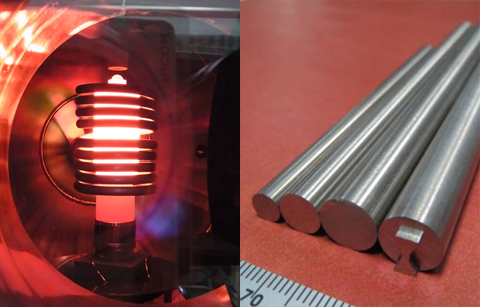Front Line Research
Bridging the gap between possibility and the future. A search for materials with the combination of worthwhile and real pleasure.
"Nuclear Fusion Reactor" as an energy source of the next generation for the creation of a sustainable society.
Energy and environmental problems are big issue for those of us living in the 21st century. Various methods are being discussed and schemes are being attempted, and "nuclear fusion" is being considered to be the last resort for the solution.
Nuclear fusion refers to an atomic reaction caused when a lighter atom like hydrogen collides with another hydrogen atom to generate a heavier atom. When atoms combine, a significart amount of energy is produced in exchange for a very slight loss of mass (E=Δm・c2). This is observed everyday in the sun that burns in outer space without oxygen, which is the reason why nuclear fusion reactors are called the "Sun on the Earth". However, generating a fusion response by nucleus-nucleus collisions of two atoms is not that simple. Even with relatively mild reactions, it requires very high temperatures of around 100 million degrees (at which all matters becomes a plasma state: an atom ionized ad separated into a nucleus and electrons). Also, a container (and materials) to confine high temperature and high-density plasma needs to be considered, since it is required to hold plasma particles in a high-density environment for some time to create the reaction.
This ultrahigh temperature plasma can be troublesome. Since the plasma is confined by magnetic field, the material does not contact the plasma directly, but the material tempeature is constdered to be in the range of 1000–2000℃. The plasma also emits photon (heat and radiation) , energetic neutral particles (atom, molecule), ion and electron, and neutron, materials exposed to them damaged by atomic displacement and atoms on the surface of the material ejected out (sputtering). The ejected atoms into the plasma acts as impurities and cools down the high temperature plasma necessary for nuclear fusion reaction.

Tungsten alloy created in the laboratory.


